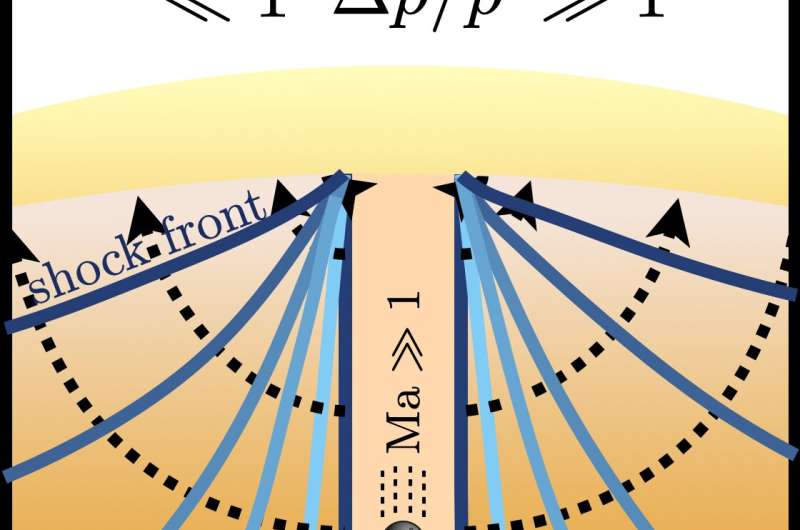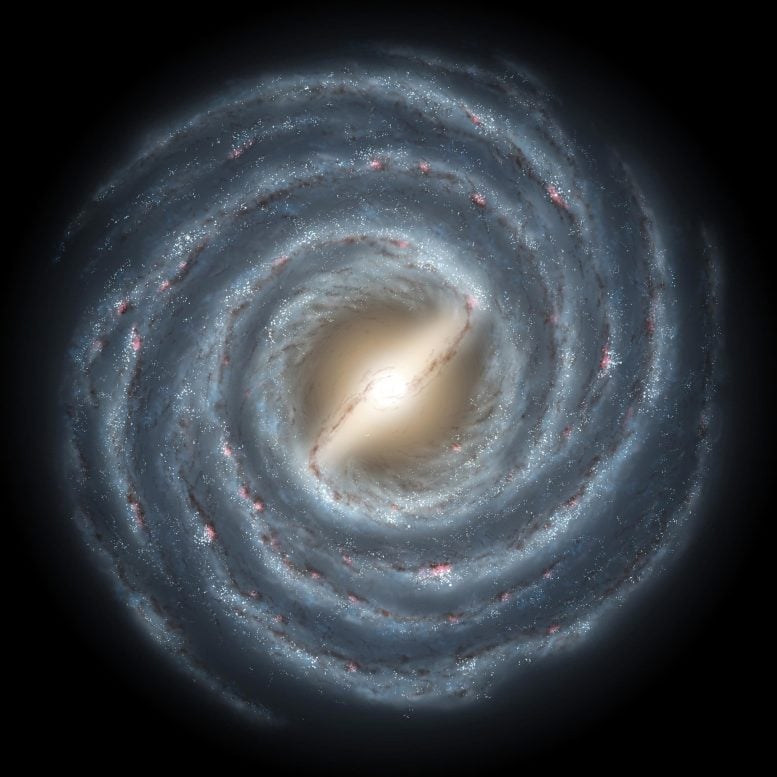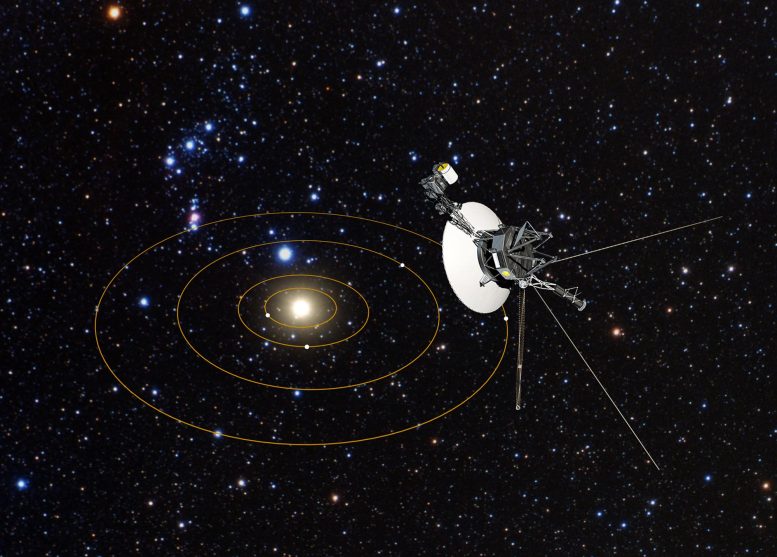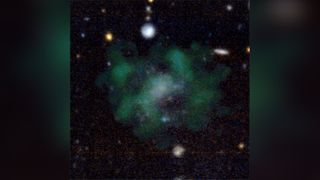Hunting for dark matter — inside the Earth
By Paul Sutter - Astrophysicist
The answer to the dark-matter mystery may be under our feet.

The Cryogenic Dark Matter Search is one of the most sensitive efforts to track down dark matter particles. But the best dark-matter detector may be Earth itself, a new study suggests.(Image: © SuperCDMS/Slac National Accelerator Laboratory)
Dark matter is a hypothetical component to our universe, used to explain many strange behaviors of stars and galaxies.
Despite the almost overwhelming evidence that dark matter does indeed exist, we still don't know what it's made of. Detectors scattered around the world have been operating for decades, trying to catch the faint trace of a passing dark matter particle, but to no avail. A new paper offers an alternative approach: dig deep.
Related: The 11 biggest unanswered questions about dark matter
We know that dark matter exists through a variety of astronomical observations. Stars are orbiting the centers of their galaxies too fast. Galaxies are whizzing around inside clusters too quickly. Massive structures in the universe are appearing too early.
As far as we can tell, there is much more to the cosmos than meets the eye — there is some form of matter that is entirely invisible to us. Whatever the dark matter is, it's a new kind of particle that doesn't interact with light, which means it doesn't emit, absorb, reflect or refract electromagnetic radiation. Which means we can't see it. Which makes it dark.
So far, the only way we know dark matter exists is through gravity. Despite its invisibility superpower, dark matter still has mass, which means it can tug and shape on the biggest objects in the universe, revealing its presence through the motion of the more luminous stars and galaxies.
On the other end of the scale, particle physicists have been concocting new particles as consequences for new theories of physics, and some of them fit the bill for what the dark matter could be. The most promising candidate is a particle known as a WIMP: a weakly interacting massive particle.
The "weakly interacting" part doesn't just mean the particle is feeble: it means that the dark matter does occasionally interact with normal matter through the weak nuclear force. But as the name suggests, the weak nuclear force isn't the strongest, and it has very short range, making these interactions incredibly rare.
Buried clues
But "rare" doesn't mean "never." It's thought that billions — even trillions — of dark matter particles are swimming through you right now. But since the dark matter hardly notices normal matter, and vice versa, you simply don't feel it. You have to go out to big scales before you start to see its gravitational effects.
Still, rarely (exactly how rarely is not known yet), a dark matter particle goes rogue and interacts with a particle of normal matter through the weak nuclear force. This involves a transfer of energy (i.e., the dark matter particle kicks the normal particle), sending the normal matter flying, something that we can, in principle at least, detect.
But since it's so rare and so weak, our detection attempts haven't proven fruitful. We need big detectors that take up a lot of volume (since the interactions are so rare, it's either build a giant detector or wait for hundreds of years to get lucky). What's more, we have to bury these detectors deep underground, the deepest going 1.2 miles (2 kilometers) below the surface. This is because there's a lot of subatomic nuisance going on: other high-energy particles, like neutrinos and cosmic rays, cause similar kicks, and we need to use lots of rock to absorb them before they hit the detector, ensuring that if we do see a signal, it's more likely to be caused by dark matter.
And so far, after decades of building ever-larger detectors and watching carefully, we haven't found squat.
Read more: "Searching for Dark Matter with Paleo-Detectors"
Fossil evidence
There's a limit to how big we can make a dark matter detector, based solely on engineering and cost constraints. But thankfully, according to a new paper recently appearing on the online preprint site arXiv, there's a gigantic dark matter detector that's been collecting data for millions of years.
And it's right under our feet.
The crust of the Earth itself serves as a massive dark matter detector. When stray dark matter particles interact with normal matter inside a rock, a proton or neutron can get knocked loose, changing the chemical composition of the rock in the vicinity of the impact site. This can potentially even send the particle flying, leaving behind a microscopic scar.
Even better, deep digs have access to portions of the Earth's crust over twice as deep as our current dark matter detectors, promising results even freer of confusion from cosmic rays and other nuisance particles. And since rocks stay as rocks for millions, and even hundreds of millions, of years, they've been recording dark matter interactions for all that time, far longer than we can ever hope to access in the lifetimes of our experiments.
So it's pretty simple: dig up a bunch of rock (preferably something pure, so it's easy to analyze) and look it over with a fine-tooth microscopic comb, looking for any signs of subatomic violence.
There is one catch, however. Earth rocks naturally contain some radioactive elements, and radioactive decays will give rise to similar features. To solve this, the researchers suggest digging into oceanic crust, which is much more pure than the stuff that builds continents. With this in hand, the researchers predict that we could have a super-detector within easy reach: even a mere kilogram of rock would beat the sensitivity of the world's current best detectors.
We just have to dig in.
It's official: Vera Rubin Observatory named to honor dark matter scientist
Did this newfound particle form the universe's dark matter?
Dark matter hasn't killed anybody yet — and that tells us something
Paul M. Sutter is an astrophysicist at SUNY Stony Brook and the Flatiron Institute, host of Ask a Spaceman and Space Radio, and author of "Your Place in the Universe." Sutter contributed this article to Space.com's Expert Voices: Op-Ed & Insights.
Dark Matter and Dark Energy: The Mystery Explained (Infographic)

This can all be accounted for if there were a large amount of invisible matter tied up in each galaxy, contributing to its overall mass and rotation rate.
Astronomers know more about what dark matter is not than what it is.
Dark matter is dark: It emits no light and cannot be seen directly, so it cannot be stars or planets.
Dark matter is not clouds of normal matter: Normal matter particles are called baryons. If dark matter were composed of baryons it would be detectable through reflected light. [Gallery: Dark Matter Throughout the Universe]
Dark matter is not antimatter: Antimatter annihilates matter on contact, producing gamma rays. Astronomers do not detect them.
Dark matter is not black holes: Black holes are gravity lenses that bend light. Astronomers do not see enough lensing events to account for the amount of dark matter that must exist.
Structure in the universe formed on the smallest scales first. It is believed that dark matter condensed first to form a “scaffolding,” with normal matter in the form of galaxies and clusters following the dark matter concentrations.
Scientists are using a variety of techniques across the disciplines of astronomy and physics to hunt for dark matter:
- Particle colliders such as the Large Hadron Collider.
- Cosmology instruments such as WMAP and Planck.
- Direct detection experiments including CDMS, XENON, Zeplin, WARP, ArDM and others.
- Indirect detection experiments including: Gamma ray detectors (Fermi from space and Cherenkov Telescopes from the ground); neutrino telescopes (IceCube, Antares); antimatter detectors (Pamela, AMS-02) and X-ray and radio facilities.






